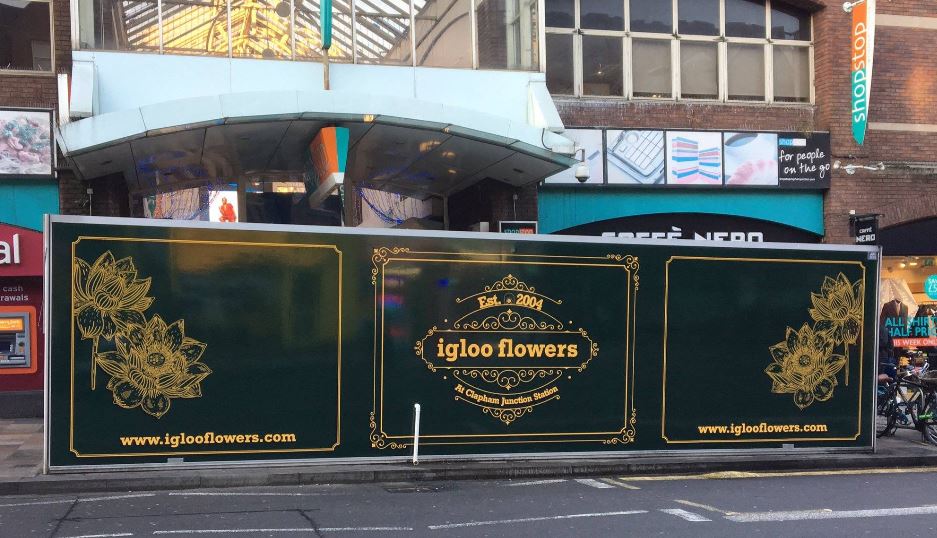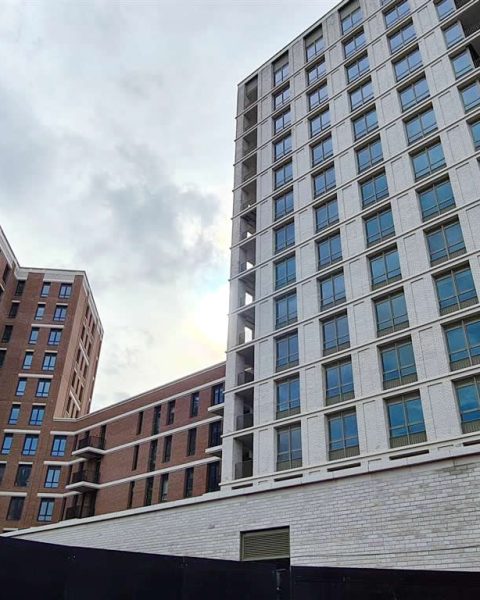Wandsworth Council’s latest presentation on the Clapham Junction Masterplan promised community engagement. Instead, it delivered a secret 22-member panel, ignored a decade of local expertise, and repackaged proposals from 2011 as if they were new.
When Peter Dawson asked the simple question—”Can we have the names of the people on the community panel?“—the council’s engagement officer visibly squirmed. Grace Crannis declined to identify anyone. There were “22 people,” she offered. They reflected “diversity” and a “demographic mix.” Dawson, a former Northcote Ward councillor who represented the area for decades, grumbled: “Basically you are saying no.”
Welcome to Wandsworth Council’s “new process” for the Clapham Junction Masterplan—where the committee shaping the area’s future is anonymous, and years of community expertise are treated as if they never existed.
The ‘new process’ recycling old ideas
The masterplan aims to address familiar challenges: improve connections and walking routes, strengthen the area’s identity, improve wayfinding and public realm, deliver affordable housing.
The two-hour presentation at St Peter’s Church on 29th October was billed as an update on work to draft the planning document. What it actually revealed was how little progress has been made since the process formally began in early 2024.

The meeting was opened by Gurmeet Sian, chair of the newly formed Clapham Junction Community Panel (CJCP).
Councillor Aydin Dikerdem, Cabinet Member for Housing, told attendees the council wanted to take a “proactive role” in shaping an area of significant infrastructure importance. “It will require some compromise,” he said. “However, we won’t know exactly what those compromises are unless we have this discussion.”
A design team led by Weston Williamson + Partners (WW+P) has been tasked with developing proposals to improve connections north and south of the station. Strategic oversight sits with a project board chaired by Network Rail, joined by the Council and representatives of the Shop Stop mall.

Project lead William Marr-Heenan and Crannis described their work as a “new process” developing “long-term solutions” for the station and surrounding area, with a digital map which has collected 343 suggestions from residents since August 2024.
Yet much of what was presented — from wayfinding issues to station connectivity — has been discussed repeatedly over the past 15 years by local societies and community groups.
The station at the centre of any change
Clapham Junction is Europe’s busiest rail interchange, with more than 43 million passengers a year (2023/24 data from ORR). Its scale makes it central to the area’s identity — and any redevelopment inevitably defines the place itself.
After a brief history noting the station’s opening in 1863, Kate Neill-Sneller, Senior Sponsor at Network Rail with Clapham Junction station in her portfolio and also a Wandsworth resident, reminded attendees of the series of improvements since the reopening of the Brighton Yard entrance in 2011.

Overcrowding has been a growing issue at the station for some time, but Ms Neill-Sneller observed that everything changed in 2020: Covid, of course, but also the economic climate and the way people move and use public transport. However, to the relief of many who remember proposals back in 2008 to close the subway, she also insisted that the underpass remained the preferred option for many users and was thus “the busiest part of the station“.
She insisted that securing government funding remains “incredibly challenging“, noting that any long-term solution would require substantial investment. She stressed the importance of building a strong business case that clearly demonstrates the project’s wider benefits.
After outlining major ongoing projects in the area—most notably the Winstanley and York Road estate regeneration and the Falcon Bridge redesign—Ms Gesine Junker, head of masterplanning for domestic and international projects within WW+P’s infrastructure sector, set out the planning policy framework underpinning the masterplan. She explained that the current work aims to produce a Supplementary Planning Document (SPD), providing detailed guidance for development across the Clapham Junction area.
The most substantive part of the evening discussed concrete options currently being considered to improve passenger flows through the station and strengthen its integration with the surrounding area.
Taking into account what already works, what is technically feasible (the station cannot close during redevelopment), and how passengers experience the space, the presentation referenced examples of recent station redevelopments, including London Bridge with its improved circulation and concourse design; Utrecht Centraal in the Netherlands, where a wide overbridge now links the city’s historic core with new districts to the west; Reading, which adopted a similar overbridge model, albeit less seamlessly integrated than Utrecht; and Croydon, described as a more economical, functional approach with limited transformation.

At present, several options are being examined for Clapham Junction:
- An enhanced bridge that would serve as a public route through the station, connecting both sides of the area;
- A wider overbridge, modelled on Utrecht’s design;
- A new interchange-only bridge, though this would come at significant cost;
- Or a new tunnel, improving east–west movement. However, this last option is considered least feasible, given the station’s limited clearance in several areas—and the uncertainty about what exactly lies beneath parts of the site.

But if the technical options felt familiar, the real sticking point lay elsewhere — in how the council chose to run the consultation itself.
Opacity and control: Concerns over the consultation process
A new community panel, named the Clapham Junction Community Panel (CJCP), has been established to help shape the Clapham Junction masterplan project. The group includes business owners, young people and residents. The official aim is to “ensure that residents and key community members have a direct say in shaping the future of the area, with the masterplan reflecting local needs and aspirations“.
However, not only the council refused to reveal the names of those in the panel, but nothing was reported on the work done so far with the so called “Community Panel”.
All we know is that the CJCP has met three times out of a planned eight sessions. What happened in those meetings is undisclosed. Who participated is secret. Who they’re consulting with, what information they’re receiving—all apparently confidential.
The council insists the panel ensures “residents and key community members have a direct say in shaping the future of the area.” But without knowing who sits on it, there’s no way to assess whether it represents anything beyond the council’s own preferences.

The expertise the Council doesn’t want
When asked why established local societies and community groups weren’t included on the new panel, council officers delivered a blunt message: they can comment after the masterplan is completed, during statutory consultation, like everyone else.
The message was clear: long-standing community expertise was not considered relevant at this stage.
Knowledge of the area, and experience in community engagement, appear to have been low on the council’s list of priorities. The Wandsworth Society wasn’t even informed the process existed.
This pattern is not new. Around five years ago, when officers were preparing the borough’s Local Plan, they lamented that Covid restrictions had limited their understanding of the areas they were planning for—yet made no effort to contact local societies for input. As one councillor bluntly observed during a Clapham Junction Action Group meeting at the time, “Planning officers often find community groups a nuisance.”
The consequences were predictable. When the first draft of that Local Plan was released, it drew sharp criticism. The Battersea Society described it as “poorly structured, inconsistent and incoherent.”
Apparently learning from past error is not part of the agenda here.
- Read our article: Appalling job done by Wandsworth Council in drafting the latest Local Plan and suggestions from the Community expertise .
Exploring options already presented more than a decade ago
The Clapham Junction Action Group (CJAG) produced a detailed dossier on exactly these options in 2011, complete with consultation statements and proposals. In 2019, CJAG met with Network Rail’s development manager to discuss station improvements, presenting examples including Basel station in Switzerland—whose design, linking historic and modern districts, mirrors precisely what’s now being proposed for Clapham Junction.
When asked whether she was aware of CJAG’s previous work, Kate Neill-Sneller admitted she had not been told about the 2011 dossier. She was unaware of CJAG’s meetings with the Office of Rail and Road (ORR) in 2009, and with Network Rail representatives in 2010 and 2019 — the latter involving discussions with Jill Stone, then Network Rail’s development manager for the Wessex area, on the station’s condition and potential improvements.
- Read and download the dossier (October 2011): CJAG proposal for the redevelopment of Clapham Junction station
Ms Neill-Sneller also said she had believed the twin skyscraper proposal at Clapham Junction was dropped for “financial reasons” — seemingly unaware of the strong local opposition and extensive community engagement that led to its rejection.
- Read: Press articles on the withdrawal of the Clapham Junction station redevelopment application in 2009.

She stressed that improving the visibility of the entrance was one of the key issues to be addressed.
“One challenge is that it’s impossible to find the entrance to the station on Lavender Hill if you don’t know the area, because there’s only a tiny sign,” she said.
 Yet had the project team consulted any of the local societies or CJAG, they would have discovered this concern had been raised repeatedly over the years — notably in relation to the flower stand that partially obstructs the main entrance. The Battersea Society, for example, strongly objected to the kiosk’s location, arguing that “the kiosk’s placement significantly limits pedestrian movement along the footway and access to the station” and that it “has an adverse impact on the main entrance to the station and to the shops in the StopShop centre.”
Yet had the project team consulted any of the local societies or CJAG, they would have discovered this concern had been raised repeatedly over the years — notably in relation to the flower stand that partially obstructs the main entrance. The Battersea Society, for example, strongly objected to the kiosk’s location, arguing that “the kiosk’s placement significantly limits pedestrian movement along the footway and access to the station” and that it “has an adverse impact on the main entrance to the station and to the shops in the StopShop centre.”
But asking would have required acknowledging that community groups might know something worth hearing.
- Read our article: Flower stand at Clapham Junction Station: should it stay before the station’s entrance?
In reality, all previous consultations and meetings organised by local community groups seem to have been dismissed.
Sadly, none of this came as a surprise. From the outset, the Council’s project team has appeared to view community expertise as unnecessary, excluding those most familiar with the area from meaningful involvement in shaping the Clapham Junction Masterplan.
The example of London Bridge had already been discussed in 2019 with Network Rail. During the meeting with Jill Stone, CJAG also presented the interesting example of Basel station in Switzerland, a station with strikingly similar characteristics to Clapham Junction.
Basel’s design successfully connects two contrasting sides: one preserving historic architecture — akin to Clapham Junction’s Clapham Grand, Arding & Hobbs, The Falcon, Brighton Yard, and the former parcels building near the Territorial Army entrance — and the other marked by modern, taller developments, comparable to Grant Road and the Winstanley estate.

That earlier discussion closely mirrors the current proposal under consideration: an enlarged overbridge, comparable in concept to Utrecht Centraal — a solution already suggested more than a decade ago.
- Read our 2019 article: Update on Clapham Junction station’s future
A masterplan going nowhere and a familiar pattern
What progress has been made on the Clapham Junction Masterplan, the answer is: very little.
In a year and a half, almost nothing appears to have happened. When we published an article where bridges and the underpass were discussed, we gave it the title: Clapham Junction Masterplan: initial presentation focusing on vague options for overpass bridges. In that article, everything was already being discussed: the London Bridge case, the series of improvements to the station since 2009, the proposals including CJAG’s survey, dossier and meetings.
- Read (March 2024): Clapham Junction Masterplan: initial presentation focusing on vague options for overpass bridges
At the following Planning Forum meeting in March 2024 at the Town Hall, the Battersea Society emphasised the need for “genuine engagement with the community”— one that understands the area — warning that too often consultations amount to little more than the presentation of pre-determined options. By October 2024, progress on the masterplan remained minimal, and in April 2025 we reported that “progress on the main masterplan has been slow, with little tangible advancement reported since the initial phase.“
The next planned community meeting is now scheduled for 18 February 2026—once again in the middle of the school holidays. The third and final session, presenting the completed document, is expected after the local elections, in summer 2026. Officers insist the timing is not politically motivated.
Meanwhile, the CJAG dossier from 2011—containing detailed proposals drawn from extensive consultation—gathers dust.
On that cold, dark evening, the first question from the audience summed up the prevailing sentiment: We’ve been here before—and if local expertise continues to be ignored, what’s the point of this discussion?
Disclaimer: Cyril Richert is one of the founding members of the Clapham Junction Action Group, led the campaign against the Twin Towers at the station in 2008-09 and received a community award for best campaigner in 2010 from South London Press.


















Good article
I don’t know whether to laugh or cry. A planning committee that falls short of it’s remit, cuts the local community out of the loop and then when called to account passes off old homework as their own. At this rate nothing will ever get done before the heat death of the universe.